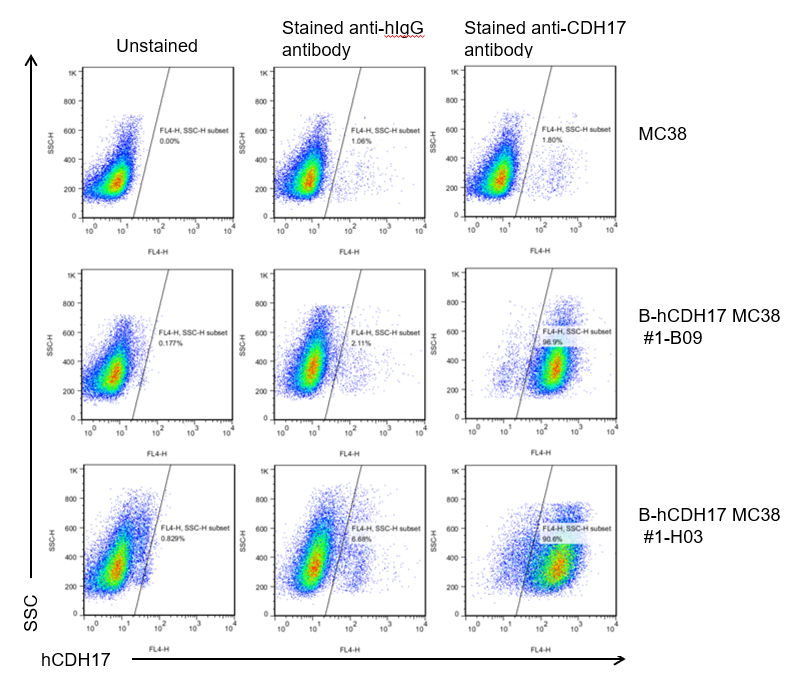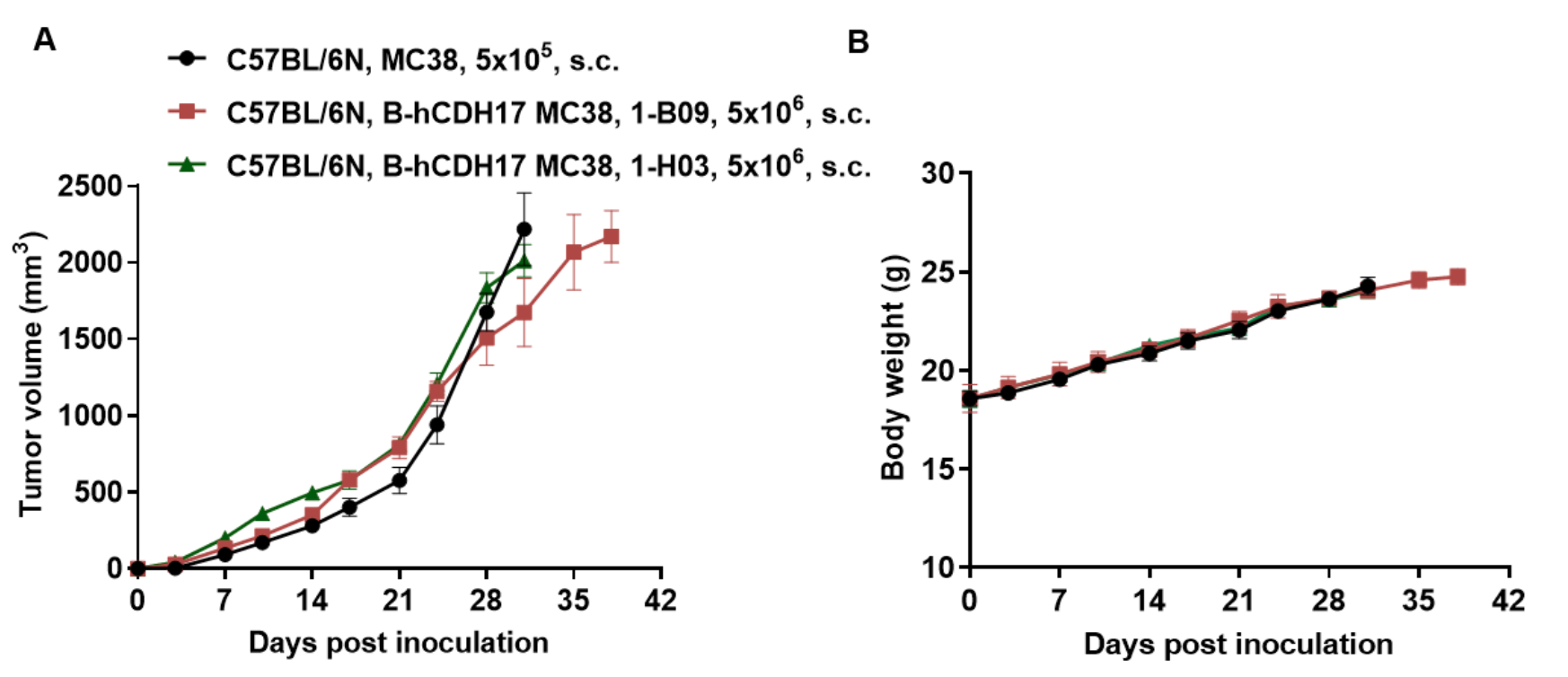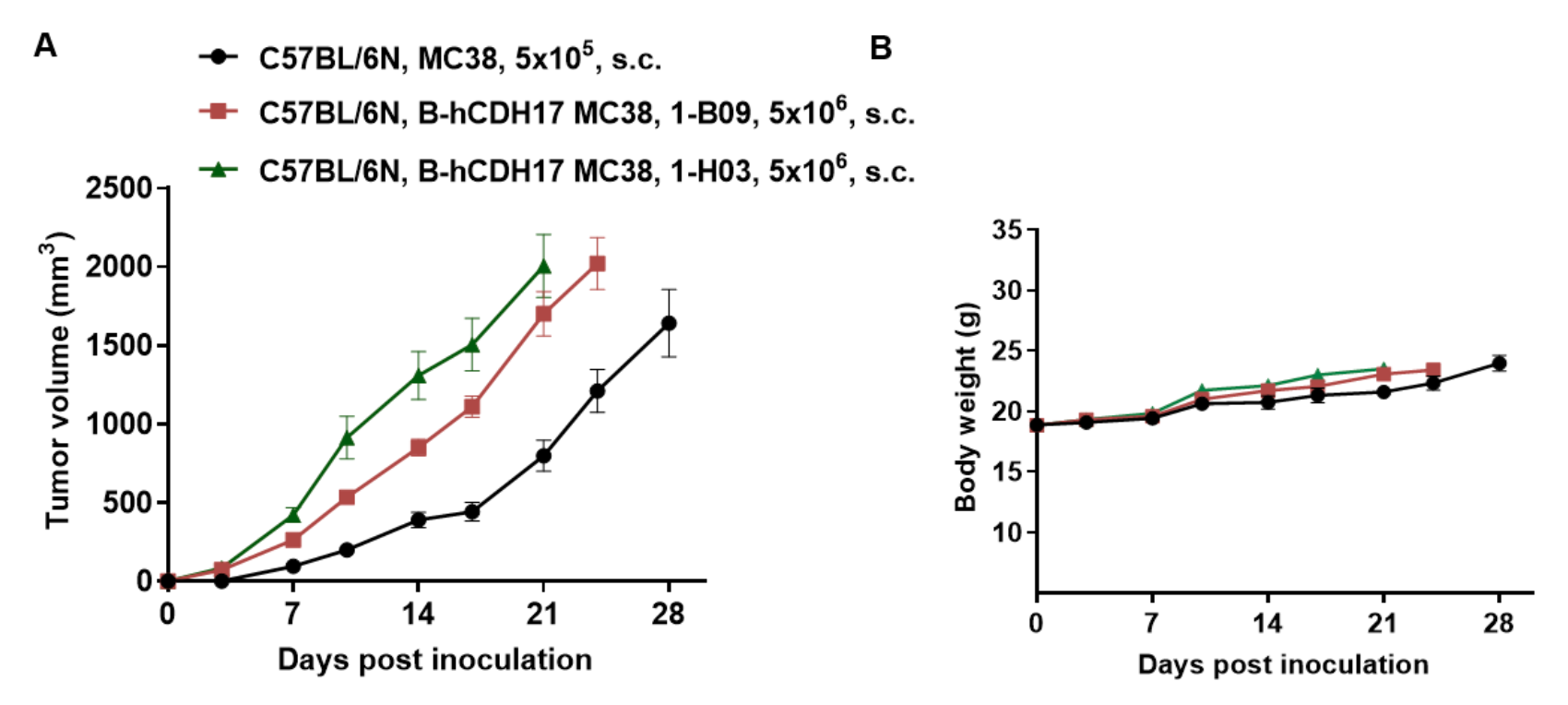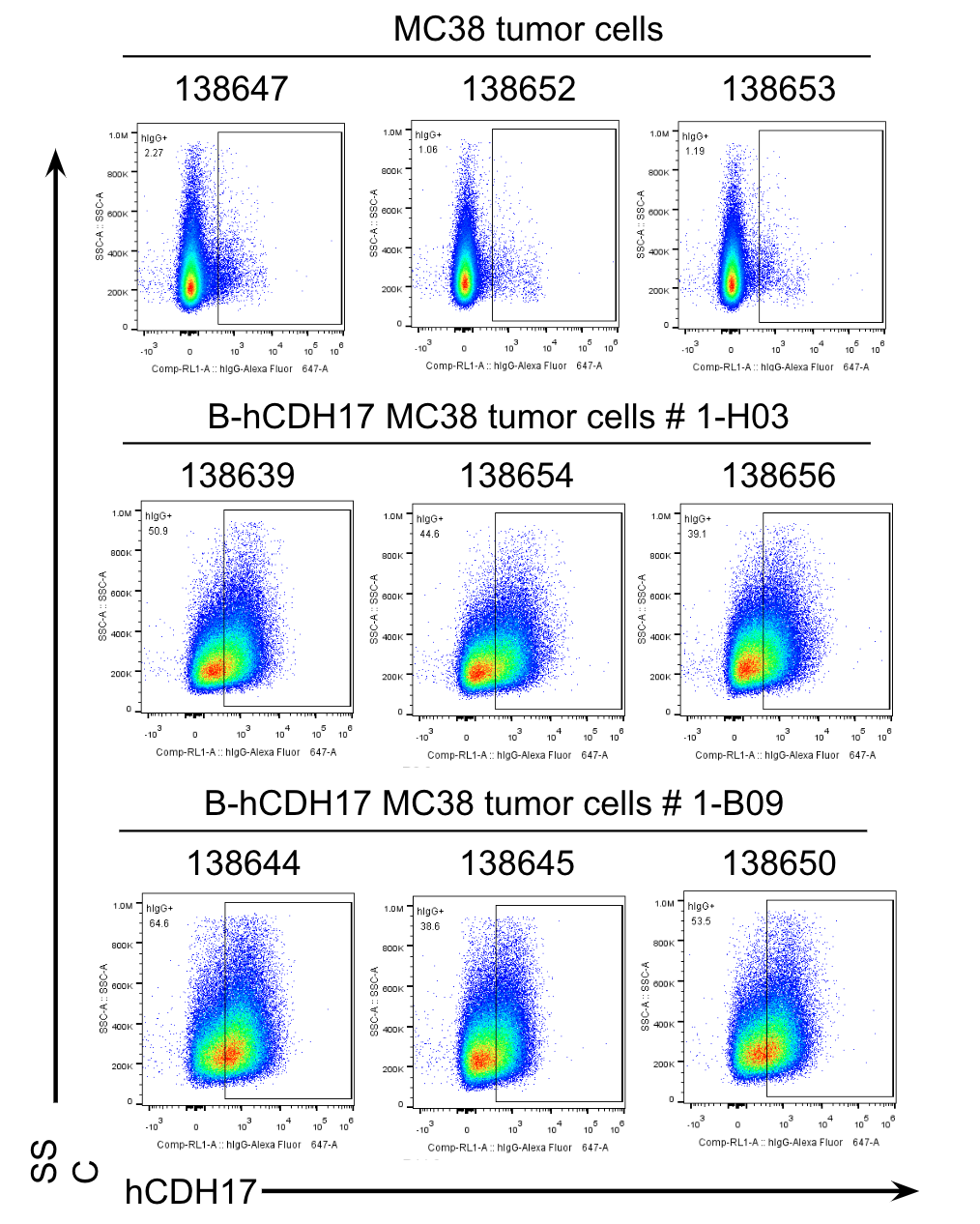Basic Information
Description
The mouse Cdh17 gene was replaced by human CDH17 coding sequence in B-hCDH17 MC38 cells. Human CDH17 is highly expressed on the surface of B-hCDH17 MC38 cells.
-
Targeting strategy

-
Gene targeting strategy for B-hCDH17 MC38 cells. The exogenous promoter and human CDH17 coding sequence was inserted to replace part of murine exon 3. The insertion disrupts the endogenous murine Cdh17 gene, resulting in a non-functional transcript.
-
Protein expression analysis

-

CDH17 expression analysis in B-hCDH17 MC38 cells by flow cytometry. Single cell suspensions from wild-type MC38 and B-hCDH17 MC38 cultures were stained with anti-CDH17 antibody. Human CDH17 was detected on the surface of B-hCDH17 MC38 cells but not wild-type MC38 cells.
-
Tumor growth curve & Body weight changes

-

Subcutaneous homograft tumor growth of B-hCDH17 MC38 cells. B-hCDH17 MC38 cells (5×106) and wild-type MC38 cells (5×105) were subcutaneously implanted into C57BL/6 mice (female, 7-week-old, n=6 or 8). Tumor volume and body weight were measured twice a week. (A) Average tumor volume ± SEM. (B) Body weight (Mean± SEM). Volume was expressed in mm3 using the formula: V=0.5 X long diameter X short diameter2. As shown in panel A, B-hCDH17 MC38 cells were able to establish tumors in vivo and can be used for efficacy studies.

Subcutaneous homograft tumor growth of B-hCDH17 MC38 cells. B-hCDH17 MC38 cells (5×106) and wild-type MC38 cells (5×105) were subcutaneously implanted into C57BL/6N mice (female, 8-week-old, n=6). Tumor volume and body weight were measured twice a week. (A) Average tumor volume ± SEM. (B) Body weight (Mean± SEM). Volume was expressed in mm3 using the formula: V=0.5 X long diameter X short diameter2. As shown in panel A, B-hCDH17 MC38 cells were able to establish tumors in vivo and can be used for efficacy studies.
-
Protein expression analysis of tumor cells

-

B-hCDH17 MC38 cells (5×106) and wild-type MC38 cells (5×105) were subcutaneously implanted into C57BL/6N mice (female, 8-week-old, n=6). At the end of the experiment, tumor cells were harvested and assessed for human CDH17 expression by flow cytometry. As shown, human CDH17 was highly expressed on the surface of tumor cells. Therefore, B-hCDH17 MC38 cells can be used for in vivo efficacy studies of novel CDH17 therapeutics.


